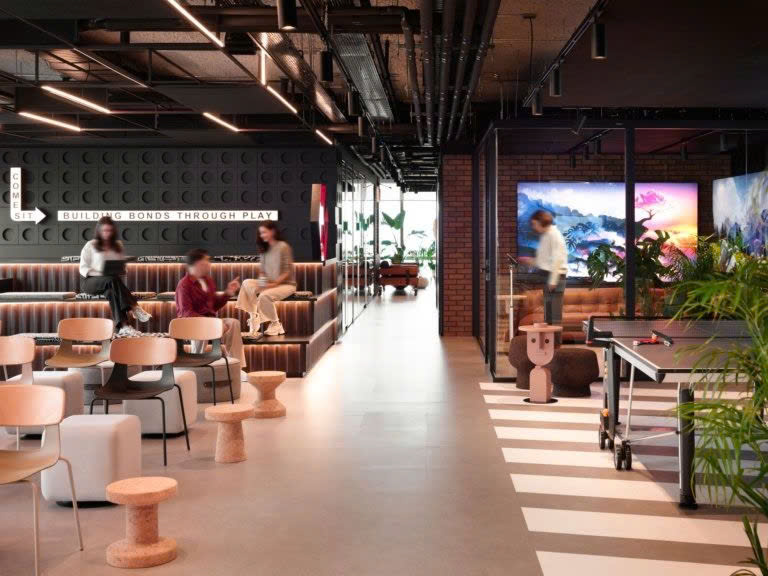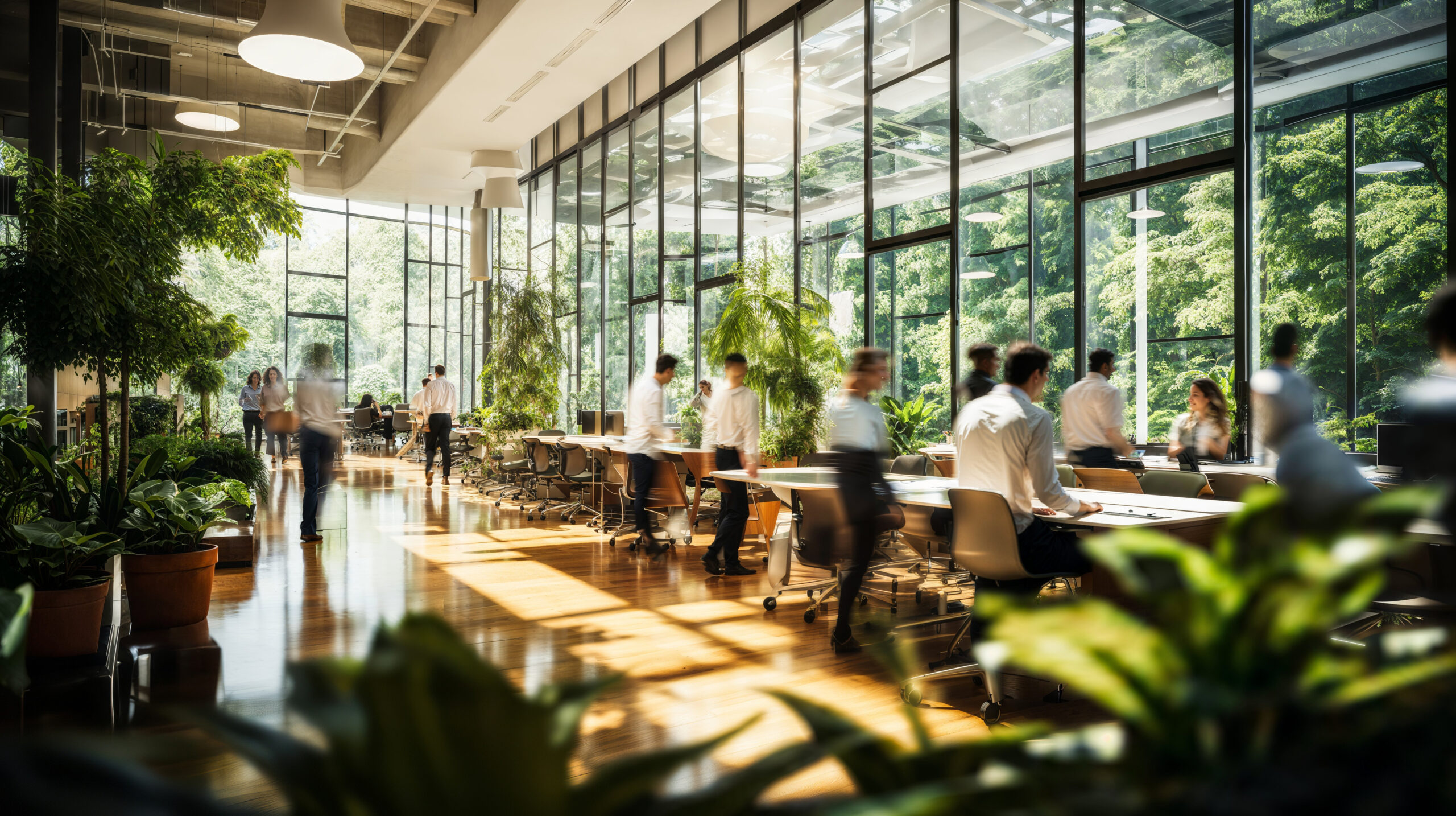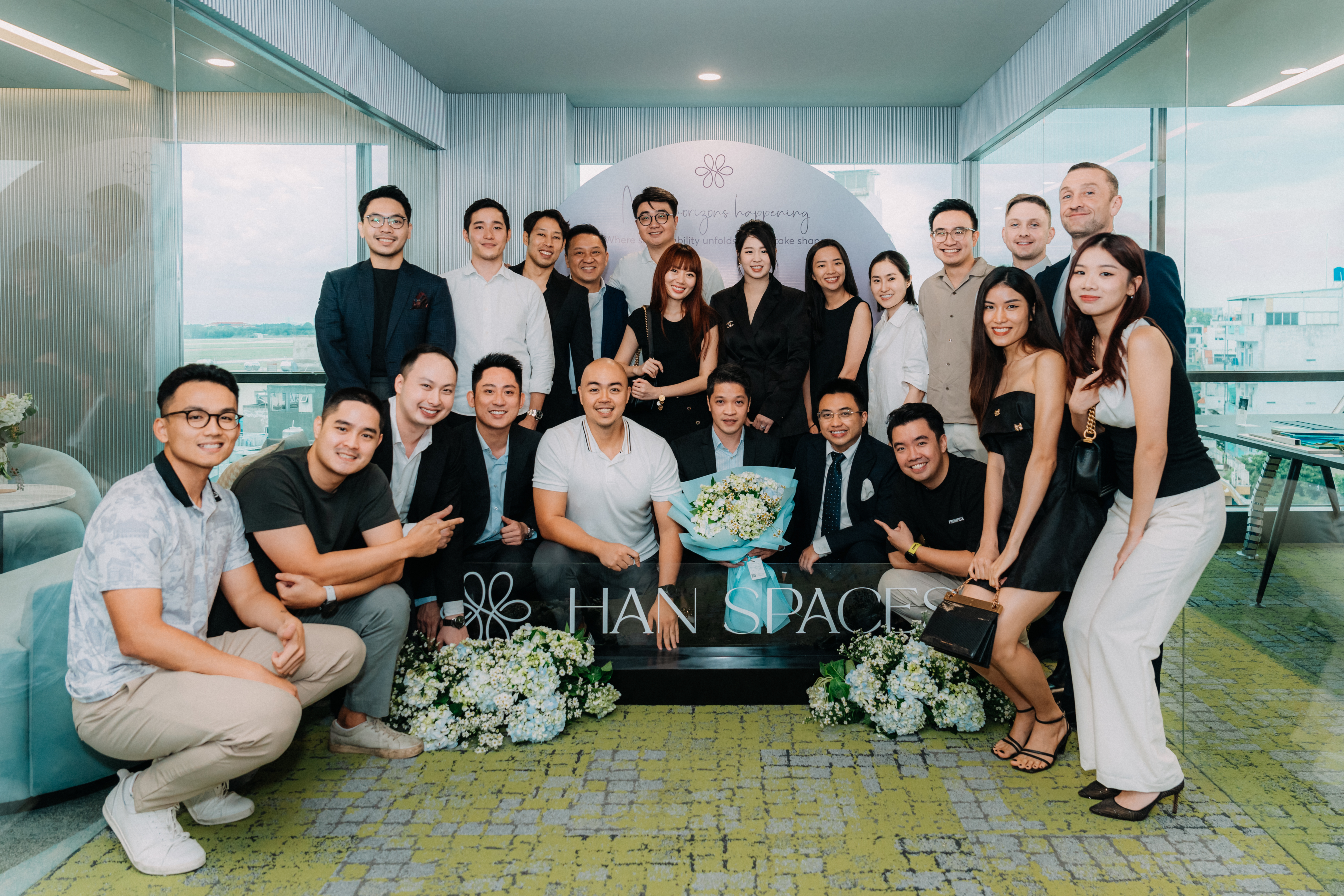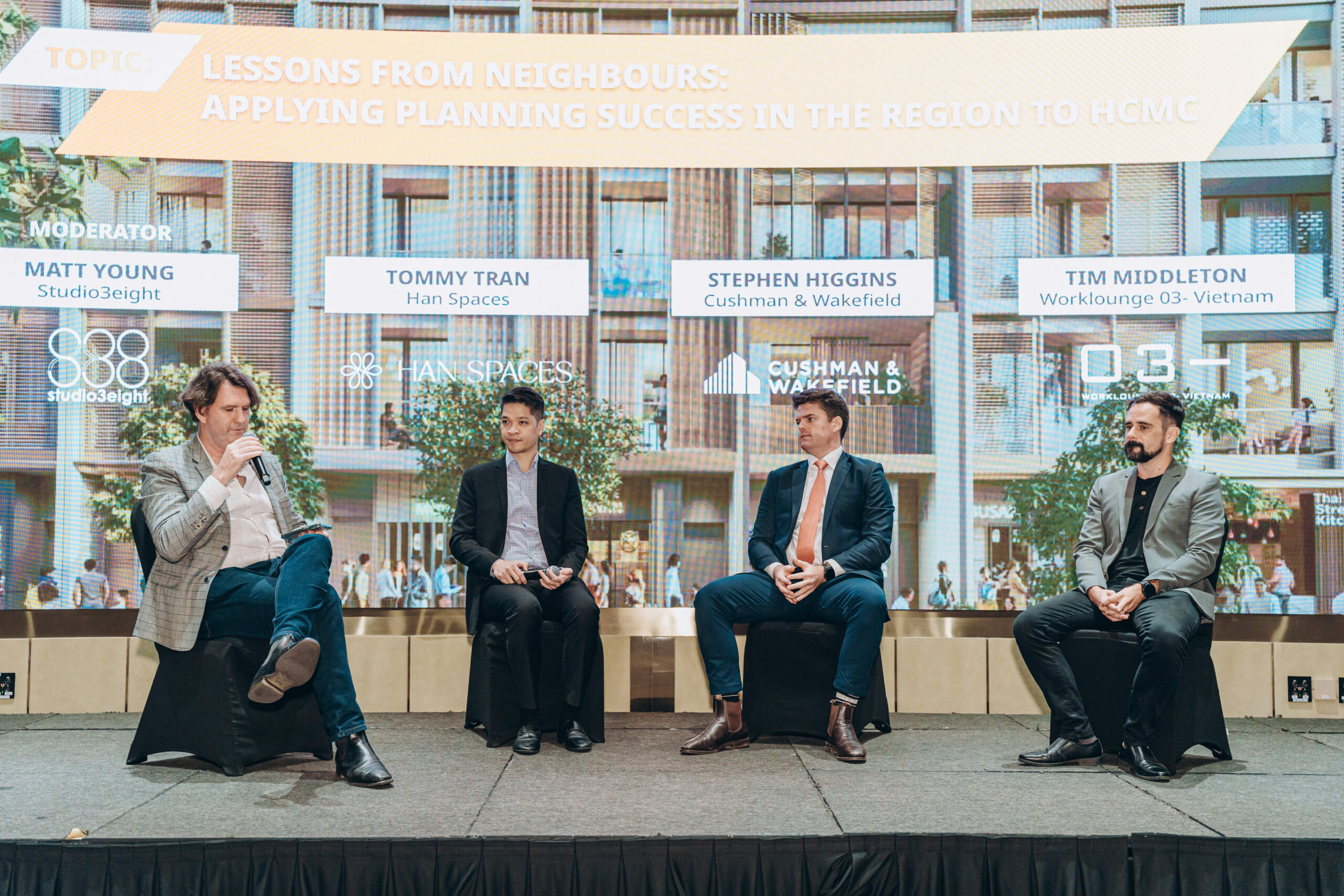How office design can impact workplace productivity
Beyond aesthetics, office design is considered a strategic tool, contributing to unleashing your employee’s full potential. It goes beyond a mere brick-and-mortar office, influencing many aspects such as employee concentration, collaboration, engagement, well-being, and talent retention. Let’s now examine the correlation between office design and workplace productivity, as well as how to improve employee productivity through effective design strategies.
How does interior office design affect workplace productivity?
A thoughtfully designed office plays a pivotal role in creating a less stressful and more productive working environment. To produce exceptional outcomes at work, it is important to keep your employees calm and comfortable. Based on the Fellowes Workplace Wellness Report, it is suggested that an overwhelming 87% of employees would like their employer to offer healthier work environment like ergonomic furniture, wellness rooms, healthier lunch food, etc.
Overall, interior office design has a significant impact on employee productivity. Selecting the right layout is vital to improving employee productivity, engagement and well-being, and job satisfaction.
How to enhance employee productivity through strategic office design
Here are some of the key improvements for you to consider to optimize your office for maximum productivity:
1. Biophilic design

Biophilic design – a strategic approach that helps create a productive workplace
Biophilic design is known as the practice of incorporating natural elements into the working environment. Here is how this strategic approach contributes to create an enjoyable, productive workplace for employees:
. Greenery: Clearly, greenery helps purify the air and add a touch of nature into the workplace that significantly reduces stress and anxiety, resulting in higher levels of concentration and well-being.
. Natural light: According to studies, much more exposure to natural light compared to artificial light helps increase productivity.
. Water features: Incorporating water sound helps improve cognitive function, resulting in better problem-solving and decision-making.
. Other ways: Other methods to maximize employee productivity through biophilic design are using natural elements such as wood and stone in office furniture or installing living walls or vertical gardens.
2. Noise management

How to manage noise to improve workplace productivity
Office noise can be one of the biggest productivity killers. Designing the office with this in mind is crucial. In case your business has employees who usually discuss with customers via phone or online meetings, etc. To boost employee productivity in such situations, you should create quiet zones. These areas, which are fully equipped with soundproof booths, phone booths, or private meeting rooms, are designated for focused work. Another way is encouraging employees to move around the office by creating numerous types of workspaces, such as lounge chairs and standing desks, leading to reduced noise in specific areas.
3. Color
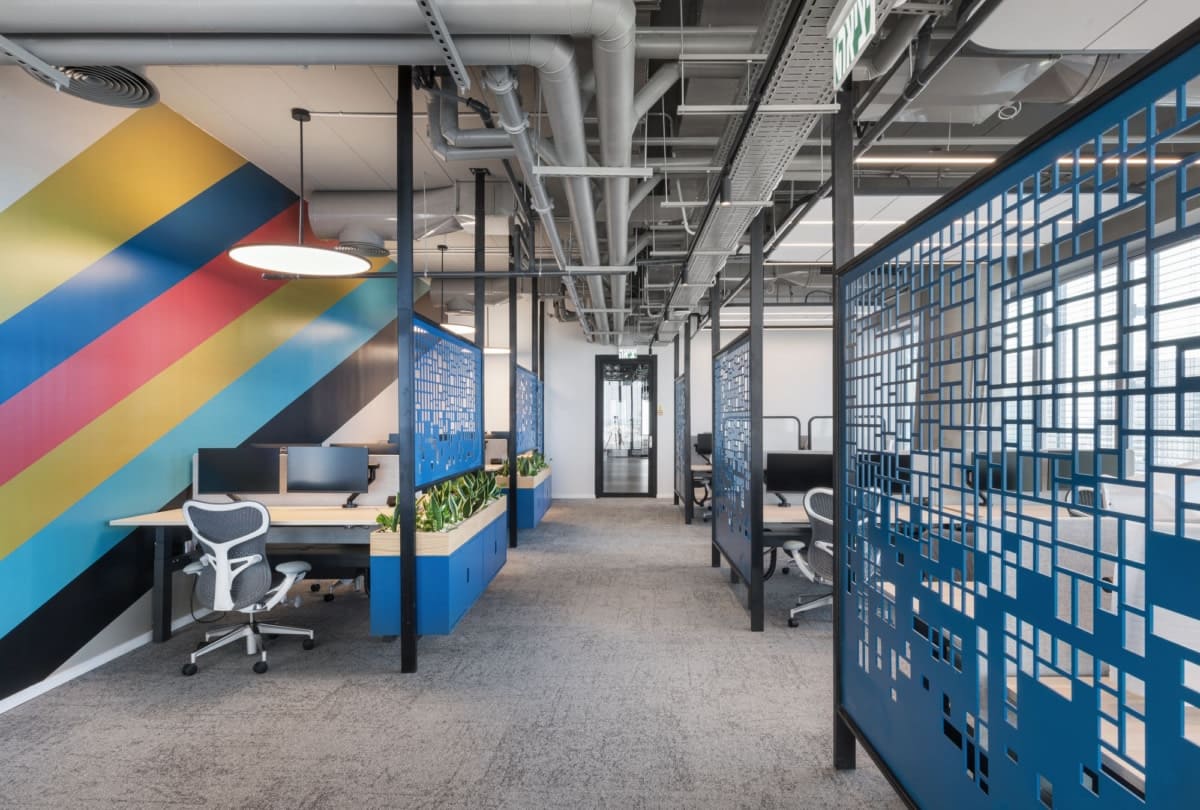
Blue color can have a calming effect, vastly mitigating stress and anxiety,
It is suggested that color has a powerful impact on mood, focus, and creativity, thus impacting employee performance. For example, warm colors like yellow, pink, and orange can create feelings of happiness, optimism, and enthusiasm, helping boost mood and energy. On the other hand, green and blue ones can have a calming effect, vastly mitigating stress and anxiety, hence improving well-being and productivity.
However, it is crucial to keep in mind that a balanced combination of colors is essential to achieve the desired effect. For example, excessive use of warm colors can irritate the eyes and cause headaches. The key is moderation, so use colors carefully and strategically.
4. Ergonomic furniture

Investing in ergonomics in the workplace is worth it.
Ergonomic furniture helps employees maintain proper posture and alignment. This significantly reduces muscle strain, back pain, and fatigue, allowing them to work comfortably for longer periods of time. It also means that working in a comfortable position enables employees to focus on their tasks without the distraction of physical pain, leading to increased productivity. On top of that, a study conducted by NHS staff in the British Medical Journal revealed that individuals who used a standing desk reported reduced levels of anxiety and fatigue, along with an improved quality of life. Therefore, investing in ergonomics in the workplace is crucial and valuable.
5. Hybrid office design
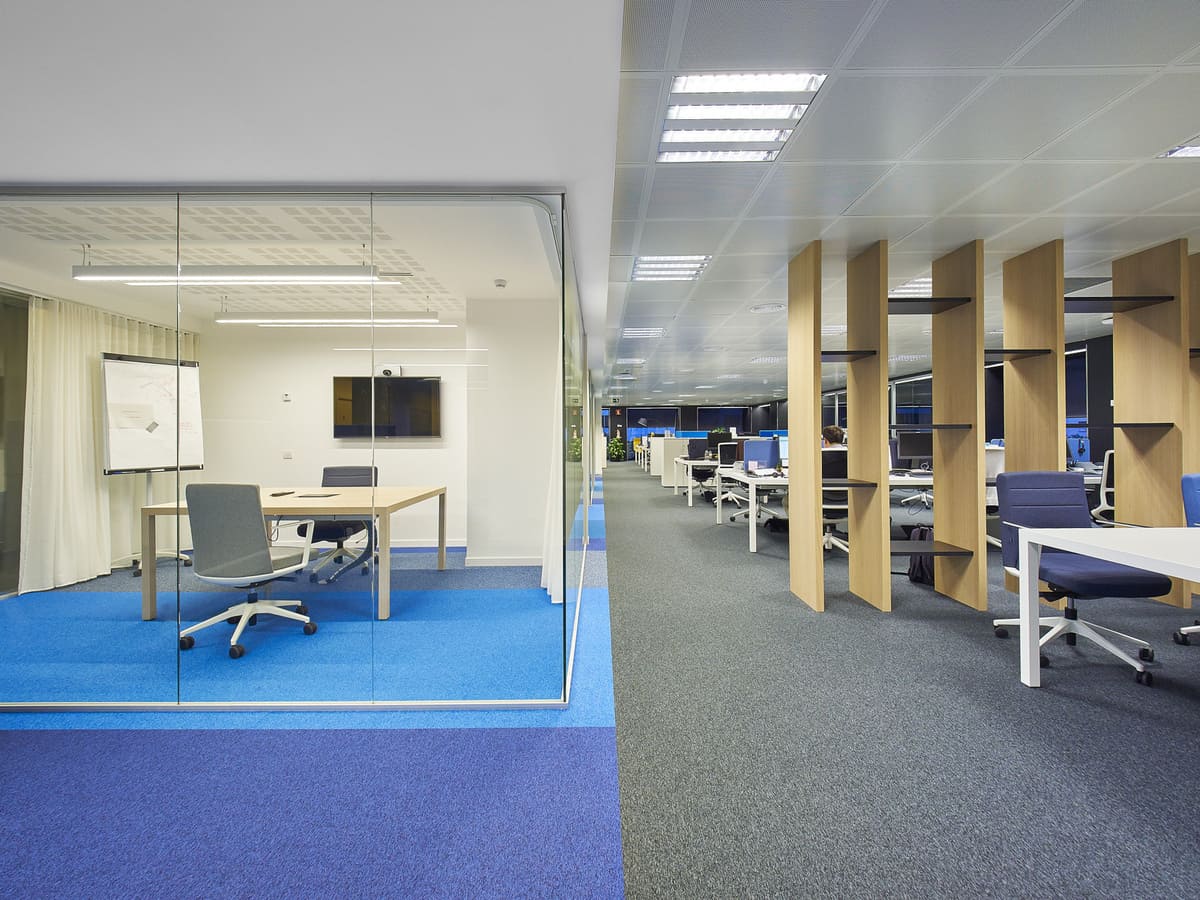
Incorporating technology facilitates communication between in-office & remote staff
The hybrid model has gained traction since the Covid-19 pandemic. It is known as a working model that allows employees to work remotely while still going to the office for several days. In order to adapt to this trend – the future of the workplace, more and more businesses are revamping their office to meet that requirement. For example, businesses offer a variety of workspaces, such as quiet zones, standing desks, and collaboration areas, to cater to different working models and tasks. Furthermore, incorporating technology like conferencing tools, project management platforms, and other technologies to facilitate seamless communication between in-office employees and remote ones is crucial.
Conclusion
By implementing these strategic approaches mentioned above, you can improve your workplace productivity. However, remember that there is no one-size-fits-all approach; you should create a workplace tailored to your specific needs, styles, corporate culture, and employee needs. Design is an ongoing process, so be open to adapting and changing the design as your business and employee needs evolve. Hopefully, this article helps guide you on the journey to creating a pleasant, productive, and thriving office.
